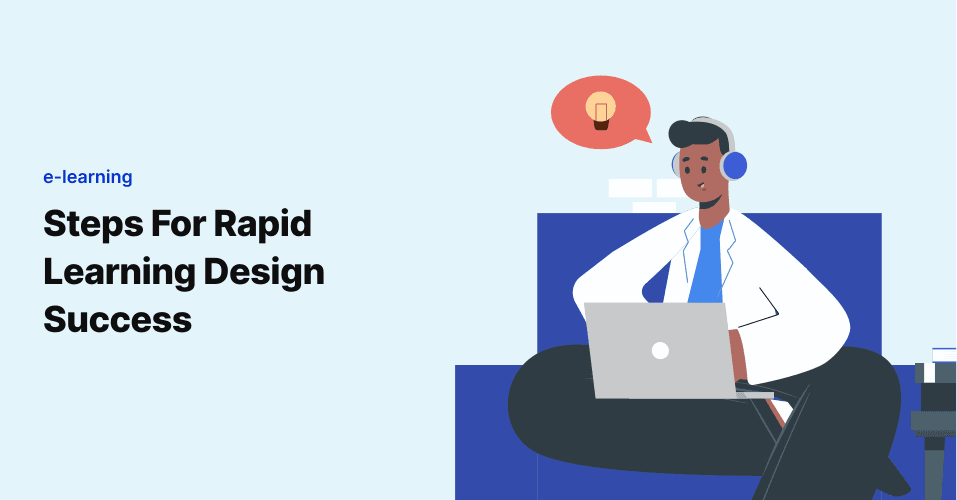
Calculating your Training Return on Investment
Return on investment (ROI) is one of the most important metrics for any business especially if they are …

It’s far more rare at the moment to find organizations that aren’t willing to adapt to virtual tools to support nearly all aspects of business, but it’s worth remembering that not all industries are used to leveraging all that going digital has to offer. Healthcare can often be slow to adapt to technology trends, generally citing security concerns and scalability at the hospital and health system level (which we don’t entirely blame them for their prudence). One key area that makes both immediate and long-term sense to tap into is EHR digital learning. Despite the exhausting and even scary state of healthcare at the moment, EHR implementations are still needed/happening. So let’s focus now on dispelling a few misconceptions about e-learning for Epic end-users to better hone in on how this “fallback” method for rolling out training could actually produce far better results and with more efficiency.
One of the biggest mistakes we see when it comes to leveraging digital learning for EHR training is ignoring the unique medium of a virtual setting. Simply recording or streaming classroom training sessions isn’t what we’re going for here. Not only would that be quite boring to watch, but it also sets up an additional level of passivity that will exacerbate the distance aspect of delivery. (We’ll talk about passivity more in just a moment.) Rather, digital learning instructors must be accustomed to engaging with attendees without physically being in the same space and therefore approach the content and delivery in dynamic ways that best fit digital delivery.
For example, referencing a whiteboard behind the trainer would be an example of basically replicating classroom training. Instead, supporting content and visuals should be incorporated into the streaming production or recording so that materials are front and center for the Epic end user. Even if health systems opt to offer both classroom and virtual training for EHR implementation efforts, it’s important that each setting is tailored to the medium and content is developed and presented accordingly.
As mentioned earlier, a concern with digital learning is the out-of-sight aspect of delivery. There’s the assumption that without the instructor in view of the attendees, that too much mutli-tasking or tuning out will occur to make the e-learning session fruitful. But an important factor to keep in mind here is that EHR digital learning is catering to adults. So while babysitting and micromanaging is entirely unnecessary, delivering engaging, meaningful training content will best appeal to and serve attendees to encourage participation and attention.
A simple way to avoid passive instruction is to incorporate quizzes or interactive modules within the EHR digital learning session. Virtual tools abound to support this kind of integration, which serves the dual purpose of measuring retention and mastery as well as breaking up lecture-style content to keep adult learners involved. Encouraging "hands-on" activities that either get the users directly into the new EHR workflow or simulate the experience goes a long way for making the information stick.
If the first that a clinical end-user hears about an incoming Epic implementation is during a digital training session, we have a problem. Not only should socialization about the EHR Go-live happen often and early, but there must be a mode of communicating intent, value, and process for rolling out the EHR to clinicians that happen outside of training. Because messages about change and workflow disruption are incredibly distracting to most busy physicians and clinical staff, the EHR digital learning classes should be focused solely on how to operate Epic and get on with their jobs. Trying to loop in too many topics or intents will overwhelm attendees and distract them from the most important objective at hand.
EHR Digital Learning is a unique medium with unique opportunities for health systems willing to leverage this option. Trying to replicate classroom training online isn’t enough to enjoy the benefits of e-learning for Epic users, so project teams do well to think outside the classroom box and create training content that is optimized via virtual delivery.
Join over 3,200 subscribers and keep up-to-date with the latest innovations & best practices in Healthcare IT.

Return on investment (ROI) is one of the most important metrics for any business especially if they are …

Rolling out a new instance of Epic is a big deal. It takes a lot of resources and time to implement EHRs into …

Not too long ago, our hero Jacob, an instructional designer by profession, worked for a global organization …